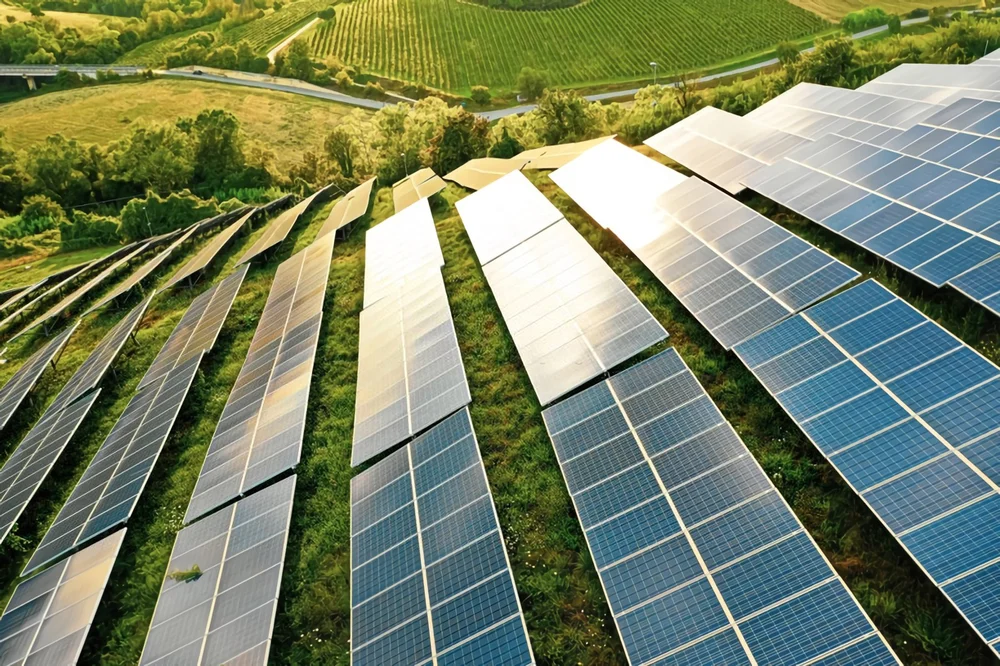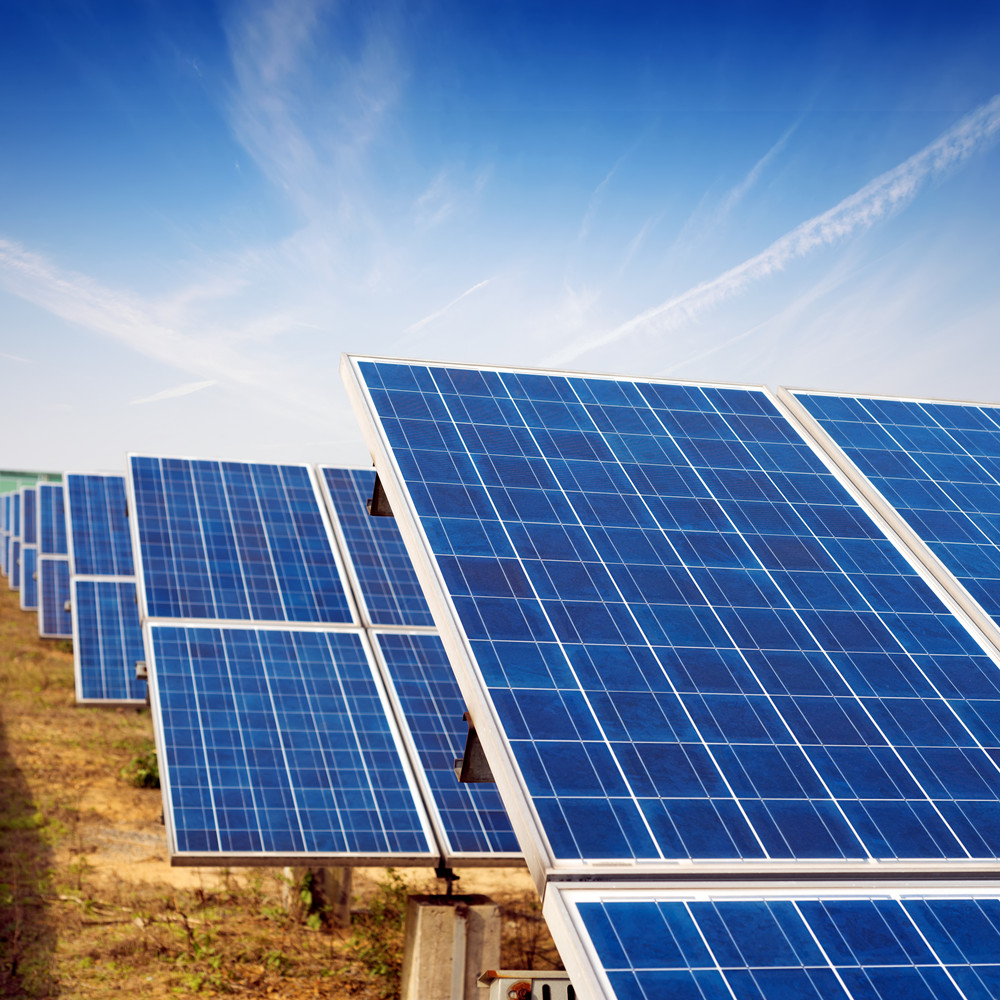Solar power plants are at the forefront of revolutionizing the energy sector, offering a sustainable solution to meet the world’s growing energy demands while addressing climate change. With their capacity to harness an abundant, renewable resource—the sun—solar power plants have become a symbol of innovation and hope for a greener future.
What Are Solar Power Plants?
Solar power plants are facilities designed to capture sunlight and convert it into electricity. They typically operate using two main technologies:
- Photovoltaic (PV) Systems: These use solar panels composed of photovoltaic cells to directly convert sunlight into electricity.
- Concentrated Solar Power (CSP) Systems: These systems focus sunlight using mirrors or lenses to heat a fluid, which generates steam to drive turbines and produce electricity.
Both systems offer unique advantages and are being deployed worldwide to cater to varying energy needs.

History of Solar Power Plants
The concept of solar energy dates back to the 19th century, with early experiments in photovoltaic cells. The modern era of solar power plants began in the 1980s with small-scale installations. Significant milestones include:
- The launch of the Solar Star project in California, one of the largest PV power plants.
- Rapid advancements in solar panel efficiency in the 2000s.
- The proliferation of floating solar farms in recent years.
Today, solar power plants are a cornerstone of renewable energy strategies worldwide.
How Solar Power Works
Solar energy relies on the photovoltaic effect, where sunlight knocks electrons loose from atoms within a solar panel, creating an electric current. Solar power plants typically consist of:
- Solar Panels: Absorb sunlight and generate electricity.
- Inverters: Convert direct current (DC) to alternating current (AC) for grid use.
- Storage Systems: Batteries store excess energy for later use, addressing intermittency issues.
The efficiency and affordability of these components have dramatically improved, enabling widespread adoption.
Types of Solar Power Plants
- Utility-Scale Solar Farms: Large installations designed to supply electricity to the grid.
- Residential Solar Systems: Smaller setups for individual homes or businesses.
- Hybrid Solar Power Plants: Combine solar with other energy sources, like wind or natural gas.
- Floating Solar Farms: Panels installed on bodies of water, optimizing land use and cooling efficiency.
Each type serves distinct needs, contributing to the versatility of solar energy.
Advantages of Solar Power
Solar energy offers numerous benefits:
- Environmental Sustainability: Reduces reliance on fossil fuels and decreases carbon emissions.
- Cost Savings: Falling installation costs and free sunlight lead to long-term savings.
- Energy Independence: Countries and individuals can reduce dependence on external energy supplies.
- Scalability: Solar power plants can range from small-scale installations to massive solar farms.
These advantages position solar as a key player in the transition to renewable energy.
Challenges Faced by Solar Energy
Despite its promise, solar energy faces hurdles:
- Intermittency: Solar panels only generate power when the sun is shining.
- Energy Storage: Effective storage solutions, like advanced batteries, are essential.
- Land Use: Utility-scale solar farms require large tracts of land, raising concerns over habitat disruption.
- Initial Costs: Although declining, installation costs can still be a barrier for some.
Addressing these challenges requires a combination of policy support, technological advances, and community engagement.
Technological Innovations
The solar industry is rapidly evolving:
- High-Efficiency Panels: Innovations in materials, such as perovskites, are boosting panel efficiency.
- Energy Storage Systems: Lithium-ion and solid-state batteries are revolutionizing energy storage.
- Smart Grids: IoT and AI technologies enhance grid management and optimize energy use.
These advancements are making solar power more viable and accessible than ever.
Solar Power Plants Around the World
Countries leading in solar energy include:
- China: Home to some of the largest solar farms, like the Tengger Desert Solar Park.
- India: Boasts large-scale projects like the Bhadla Solar Park.
- United States: Pioneers in innovation with projects such as the Ivanpah Solar Electric Generating System.
These examples demonstrate the global commitment to solar energy.
Solar Power and Climate Change
Solar power plants play a crucial role in mitigating climate change:
- Reduction in Greenhouse Gases: By replacing fossil fuels, solar reduces CO₂ emissions.
- Improved Air Quality: Transitioning to solar reduces pollutants that harm human health.
- Global Warming Mitigation: Solar energy helps stabilize global temperatures by limiting reliance on carbon-intensive energy sources.
Economic Impact of Solar Energy
The solar industry drives significant economic benefits:
- Job Creation: The solar sector employs millions globally, from manufacturing to maintenance.
- Market Growth: Falling costs have made solar one of the fastest-growing energy markets.
- Energy Affordability: Lower costs benefit consumers and support economic growth.
The Role of Governments and Policies
Government initiatives are vital for the growth of solar energy:
- Subsidies and Incentives: Tax breaks and grants encourage adoption.
- Regulations: Mandates for renewable energy use drive market demand.
- Global Cooperation: Agreements like the Paris Accord emphasize renewable energy goals.
Future of Solar Power Plants
The future of solar is bright:
- Emerging Technologies: Advancements in efficiency and materials promise cheaper, better solar panels.
- Integration with Storage: Improved batteries will address storage issues.
- Increased Adoption: As costs decline, solar will become the dominant energy source.
By 2050, solar power plants could supply a significant portion of global energy needs.
FAQs on Solar Power Plants
- What is a solar power plant?
A facility that converts sunlight into electricity using solar panels or mirrors. - How efficient are solar power plants?
Efficiency varies but has improved dramatically, with some systems exceeding 20%. - Are solar power plants environmentally friendly?
Yes, they reduce greenhouse gases and rely on renewable resources. - What are the costs involved in building a solar power plant?
Costs depend on size and technology but are decreasing annually. - Can solar power plants operate at night?
Not directly, but energy storage systems can supply power during non-sunny hours. - What is the lifespan of a solar power plant?
Typically 25-30 years, with declining performance over time.
Conclusion
Solar power plants are a cornerstone of the clean energy revolution. By providing a sustainable, scalable, and increasingly affordable energy source, they hold the key to combating climate change and securing a greener future for generations to come. Embracing solar energy is not just an option—it’s an imperative for a thriving planet.






